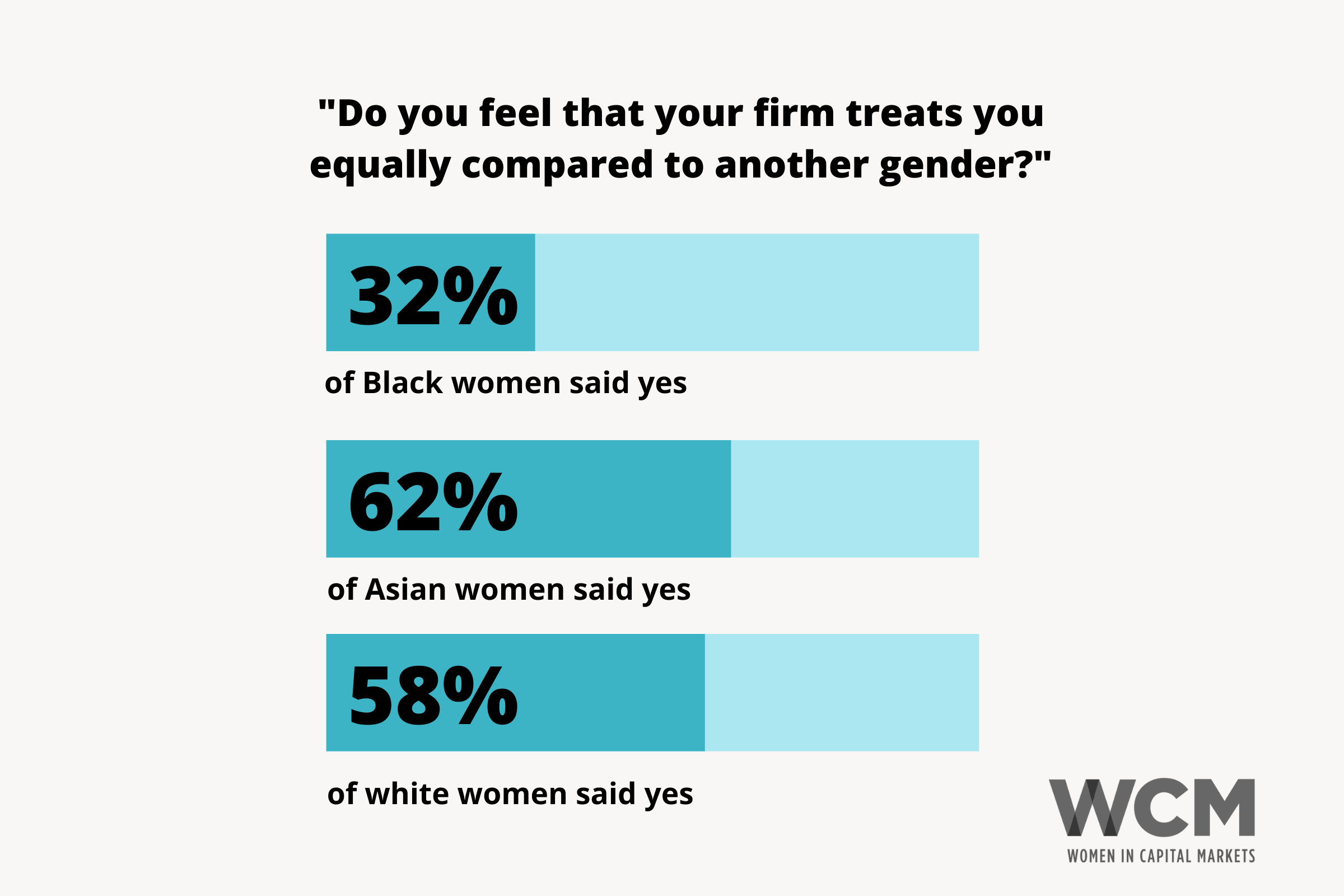Women of Color Still Face More Significant Barriers at Work
4 mins read · October 26, 2020
Camilla Sutton & Katie Squires, WCM
Summary
Equity is an essential dimension that plays a crucial role in most diversity and inclusion efforts. This report uses survey data centered around industry-wide experiences in the Canadian finance industry, focusing on how several personal identities, including gender, race, and sexual orientation, impact experiences at work. The report highlights an innovative roadmap to building equity, diversity, and inclusion (EDI) in finance, which can help professionals or firms looking to advance EDI.
Is it "He" or "She"?
For years we were using just two pronouns to address our identity, and now, a rapidly advancing finance industry demands a new workforce and inclusive workplace cultures. We live in a world where it is becoming more widely understood and accepted that identities can change across time and place. How is the financial industry addressing EDI in the workplace? Furthermore, what do folks who are not part of the majority think about it?
The Equity Equation report aims to answer this question by highlighting different workplace experiences and identifying the structural barriers and disadvantages faced by employees outside dominant groups across all work areas, from treatment to hiring, advancement, and compensation, noting an observation that a culture of inequality and inequity persists across the sector.
Methodology
This report analyzes the survey data from 600 participants working in Canada's finance industry (in capital markets), with 71 percent of overall respondents self-identifying themselves as women, 28 percent as men, and 1 percent as other gender expressions. The data fields collected from the respondents include gender, sexual orientation, race, levels of seniority, and departments in their organizations. About 91 percent of respondents identify themselves as heterosexual, and 3 percent as LGBTQ2S+. About 67 percent identified as white, 16 percent Asian, and 5 percent Black. By business area, 32 percent report they work in sell-side focused job titles, 28 percent in buy-side, 14 percent in treasury/corporate functions, and 26 percent in other areas. The report includes a detailed overview of the demographics (The Equity Equation Report, 2020, p. 45).
Key findings
Nearly 60 percent of men believe their workplace is free from gender bias, a rate double that of women, and 75 percent of men believe their workplace is free from harassment (p.8).
When asked, "Do you feel that your firm treats you equally compared to another gender," about 32 percent of Black women agreed about being treated equally, followed by 62 percent of Asian and 58 percent of white women (p. 22). Women and the LGBTQ2S+ community report a much lower level of equality (p. 24).
About 77 percent of Black women identify leadership, 73 percent identify advancement, 68 percent identify culture, and 64 percent identify lack of opportunities as barriers for women to achieving gender equality (p. 23).
Black women, women in sell-side roles, and women at the junior-mid level are the most likely to believe they are disadvantaged when it comes to opportunities because of their gender (p. 25). Women in sell-side roles and women at junior-mid levels are most likely to feel they are not equally paid compared to other genders (p. 26).
About one-quarter of women and one-third of LGBTQ2S+ identifying respondents believe their workplace is not free from harassment (p. 29).
46 percent of men and 43 percent of women say they do not understand the promotion process at their firm (p. 31).
If we say diversity leads to innovation, is there a need to embrace the complexity of diversity and recognize different perspectives and ways of working? Would having quotas to onboard more non-dominant gender in the industry help? From the survey, most women (across all groups) support using quotas to increase the representation of women on boards for a set period, with about 64 percent of Black women being supportive of the idea.
Takeaways
The report provides several recommendations to incorporate and promote equal opportunities:
Acknowledge the disparities in how employees with different identities are experiencing the workplace;
Empower and encourage employees to speak up;
Make the compensation framework transparent and available to employees;
Implement a results-oriented and output-based feedback system;
Consider barriers from a hiring perspective at the application stage (as 40 percent of applicants are from diverse communities before moving to interviews);
Track representation data regularly and share it within the organization;
Review and strengthen sexual harassment and anti-discrimination policies and reporting mechanisms, ensuring they are clear, detailed, and accessible (p. 12 - 16).
The report gives a concrete glimpse of what women of color and people from non-dominant communities feel about inequality in their workplaces in the financial sector. The report’s insightful recommendations can be a starting point to address the concerns and voices of non-dominant groups and implement better policies to address the pain points and promote equality.
Read the full report here.
References
Sutton, C., & Thompson, K. (2020). The Equity Equation: A Roadmap to Equity, Diversity, and Inclusion in Canadian Finance. Women in Capital Markets.

